#Digital advertising refers to marketing through online channels
Explore tagged Tumblr posts
Text

How is digital advertising used? Digital advertising refers to marketing through online channels, such as websites, streaming content and more. Digital ads span media formats, including text, image, audio and video.
digitalmarketingtips #MEDIAHEIGHTS #digitalmarketingcompany #searchengineoptimization #content #instagrammarketing #advertisingagency #web #MEDIAHEIGHTSPRCOM #best #public #relation #agency #in #chandigarh #mohali #punjab #north #india #buildingrelationships #globally #customer #internetbanding — at media heights #smo #branding #facebook #twitter #marketingonline #brand #searchengineoptimization #internetmarketing #follow #digitalagency #marketingagency #motivation #digitalmarketingtips #onlinebusiness #websitedesign #marketingonline #brand #searchengineoptimization #content #instagrammarketing #advertisingagency #web #technology #onlinebranding #branding360degree #SEO #SEObrandingagency #websiteranking #websitetrafic #Digitalmarketing #mediaheights #OnlineAdvertising #instagrammarketing #advertisingagency #web #marketingonline #brand
#How is digital advertising used?#Digital advertising refers to marketing through online channels#such as websites#streaming content and more. Digital ads span media formats#including text#image#audio and video.#digitalmarketingtips#MEDIAHEIGHTS#digitalmarketingcompany#searchengineoptimization#content#instagrammarketing#advertisingagency#web#MEDIAHEIGHTSPRCOM#best#public#relation#agency#in#chandigarh#mohali#punjab#north#india#buildingrelationships#globally#customer#internetbanding — at media heights
2 notes
·
View notes
Text
what is digital marketing ?
Digital marketing refers to the use of digital channels, platforms, and technologies to promote products, services, or brands to a target audience. Unlike traditional marketing methods that rely on offline channels such as print, television, or radio, digital marketing leverages online channels to reach and engage with consumers. The goal of digital marketing is to connect with the target audience in the right place and at the right time, driving brand awareness, customer acquisition, and retention.
Key components of digital marketing include:
Search Engine Optimization (SEO): Optimizing a website or content to rank higher in search engine results, improving visibility and organic (non-paid) traffic.
Content Marketing: Creating and distributing valuable, relevant content to attract and engage a target audience. This can include blog posts, videos, infographics, and more.
Social Media Marketing: Utilizing social media platforms (such as Facebook, Instagram, Twitter, LinkedIn) to promote products or services, interact with the audience, and build brand awareness.
Email Marketing: Sending targeted messages and promotional content to a group of people via email to nurture leads, build customer relationships, and encourage conversions.
Pay-Per-Click (PPC) Advertising: Running paid advertisements on search engines or social media platforms, with advertisers paying a fee each time their ad is clicked.
Affiliate Marketing: Partnering with other businesses or individuals to promote products or services, with commissions earned for every sale or lead generated through the affiliate's efforts.
Influencer Marketing: Collaborating with influencers or individuals with a significant following to promote products or services to their audience.
Online Public Relations (PR): Managing a brand's online reputation and relationships with the public through various digital channels.
Analytics and Data Analysis: Monitoring and analyzing data from digital marketing efforts to measure performance, identify trends, and make informed decisions for future campaigns.
Digital marketing provides businesses with the flexibility to target specific demographics, track and measure campaign performance, and adjust strategies in real-time. It has become an integral part of the overall marketing strategy for many organizations in today's digital age.

#digital marketing#seo#seo services#online marketing#socialmediamarketing#search engine optimization
12 notes
·
View notes
Text

Digital marketing refers to the use of digital channels, platforms, and technologies to promote products, services, or brands to reach and engage with consumers.
It encompasses various online marketing strategies and techniques, such as:
Search Engine Optimization (SEO) – Optimizing content to rank higher in search engine results.
Social Media Marketing – Promoting through platforms like Facebook, Instagram, Twitter, LinkedIn, etc.
Content Marketing – Creating valuable content to attract and engage an audience.
Email Marketing – Sending targeted emails to prospects and customers.
Pay-Per-Click (PPC) – Paid advertising on search engines or social media platforms.
Affiliate Marketing – Promoting products through third-party partnerships.
Influencer Marketing – Leveraging influencers to promote products.
Digital marketing allows businesses to target specific audiences, track performance, and optimize campaigns for better results.
2 notes
·
View notes
Text
What is Digital Marketing ?
Digital marketing refers to the use of digital channels, platforms, and technologies to promote products, services, or brands to reach consumers. It encompasses a wide range of online marketing tactics and strategies.

Key components of digital marketing include:
Search Engine Optimization (SEO): Optimizing websites and content to rank higher in search engine results pages (SERPs).
Search Engine Marketing (SEM): Paid advertising to appear in search engine results, often through platforms like Google Ads.
Social Media Marketing: Promoting products or services on social media platforms like Facebook, Instagram, Twitter, etc., to increase brand awareness, engagement, and sales.
Content Marketing: Creating and distributing valuable, relevant content to attract and retain a target audience. This can include blog posts, videos, infographics, and more.
Email Marketing: Sending commercial messages to a group of people via email to promote products or services.
Influencer Marketing: Collaborating with influencers who have a dedicated and engaged following to promote products or services.
Affiliate Marketing: Partnering with other businesses or individuals who promote your products or services in exchange for a commission.
Online PR: Using digital channels to manage a company's reputation and build relationships with the media.
Analytics and Data-driven Marketing: Utilizing data analysis tools to measure marketing efforts and optimize strategies based on insights.

Digital marketing allows businesses to reach a global audience, target specific demographics, track and measure results in real-time, and adjust strategies based on performance data. It has become essential for modern businesses looking to grow their online presence and increase sales in a competitive digital landscape.
#digital marketing#online marketing#social media marketing#web analytics#marketing#business#future of marketing
4 notes
·
View notes
Text
The Power of Digital Marketing in the Modern Business Landscape
In the era of digital transformation, the way businesses market their products and services has evolved dramatically. Traditional marketing methods are no longer sufficient to reach and engage today’s tech-savvy consumers. Instead, digital marketing has emerged as the cornerstone of modern marketing strategies. This comprehensive article explores the various facets of digital marketing, its core components, and the profound impact it has on businesses.
Understanding Digital Marketing
What is Digital Marketing?
Digital marketing refers to the use of digital channels, platforms, and technologies to promote and sell products or services. It encompasses a wide range of activities, including search engine optimization (SEO), content marketing, social media marketing, email marketing, pay-per-click (PPC) advertising, and more. The primary goal of digital marketing is to connect with potential customers online, where they spend a significant portion of their time.
The Evolution of Digital Marketing
Digital marketing has its roots in the early days of the internet, but it has rapidly evolved with advancements in technology. The proliferation of smartphones, social media platforms, and high-speed internet has revolutionized how businesses reach and interact with their audiences. Today, digital marketing is data-driven, highly targeted, and capable of delivering personalized experiences to consumers.
Core Components of Digital Marketing
Search Engine Optimization (SEO)
SEO is the practice of optimizing a website to rank higher on search engine results pages (SERPs). By improving the visibility of a website on search engines like Google, businesses can attract organic traffic from users actively searching for relevant products or services. SEO involves keyword research, on-page optimization, link building, and technical SEO.
Content Marketing
Content marketing focuses on creating and distributing valuable, relevant, and consistent content to attract and retain a clearly defined audience. This can include blog posts, articles, videos, infographics, eBooks, and more. The goal is to provide valuable information that addresses the needs and interests of the target audience, thereby establishing the business as a trusted authority in its industry.
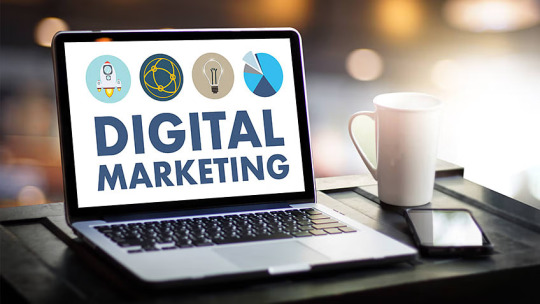
Social Media Marketing
Social media marketing involves using platforms like Facebook, Instagram, Twitter, LinkedIn, and others to promote products and engage with customers. Businesses can create and share content, run paid advertising campaigns, and interact with their audience in real-time. Social media marketing helps build brand awareness, foster customer loyalty, and drive website traffic.
Email Marketing
Email marketing is the process of sending targeted emails to a list of subscribers. It is a powerful tool for nurturing leads, promoting products, and building relationships with customers. Effective email marketing campaigns include personalized messages, promotional offers, newsletters, and automated workflows to keep the audience engaged.
Pay-Per-Click (PPC) Advertising
PPC advertising is a model where businesses pay a fee each time their ad is clicked. Platforms like Google Ads and Bing Ads allow businesses to create ads that appear on search engine results pages or partner websites. PPC campaigns are highly targeted, enabling businesses to reach potential customers based on keywords, demographics, and interests.
Affiliate Marketing
Affiliate marketing involves partnering with third-party websites or influencers to promote products in exchange for a commission on sales generated through their referrals. This strategy leverages the reach and influence of affiliates to expand a business’s customer base.
Analytics and Data
Digital marketing relies heavily on data and analytics to measure the effectiveness of campaigns. Tools like Google Analytics, social media insights, and email marketing analytics provide valuable information on user behavior, campaign performance, and return on investment (ROI). By analyzing this data, businesses can make informed decisions and optimize their marketing strategies.
The Impact of Digital Marketing on Businesses
Increased Reach and Visibility
One of the most significant advantages of digital marketing is its ability to reach a global audience. Unlike traditional marketing methods limited by geography, digital marketing allows businesses to connect with potential customers anywhere in the world. This increased reach translates to higher visibility and brand recognition.
Cost-Effectiveness
Digital marketing is often more cost-effective than traditional marketing. Many digital marketing strategies, such as SEO and content marketing, require minimal financial investment compared to print ads, TV commercials, or billboards. Additionally, digital marketing campaigns can be scaled to fit any budget, making it accessible to businesses of all sizes.

Enhanced Targeting and Personalization
Digital marketing enables businesses to target specific demographics, interests, and behaviors. This level of precision allows for highly personalized marketing messages that resonate with individual consumers. Personalized marketing not only improves customer engagement but also increases conversion rates and customer loyalty.
Real-Time Engagement and Interaction
Social media platforms and other digital channels allow businesses to engage with their audience in real-time. This immediate interaction helps build stronger relationships with customers and fosters a sense of community around the brand. Real-time engagement also allows businesses to respond quickly to customer feedback and address any issues promptly.
Measurable Results
One of the key benefits of digital marketing is its measurability. Businesses can track the performance of their campaigns in real-time, using various metrics such as website traffic, conversion rates, click-through rates, and more. This data-driven approach enables continuous improvement and ensures that marketing efforts are aligned with business goals.
Challenges and Future Trends in Digital Marketing
Keeping Up with Technological Advancements
The digital marketing landscape is constantly evolving, with new technologies and platforms emerging regularly. Businesses must stay updated with the latest trends and tools to remain competitive. This requires ongoing learning and adaptation.
Data Privacy and Security
With the increasing reliance on data for personalized marketing, businesses must prioritize data privacy and security. Adhering to regulations like GDPR and ensuring transparent data practices are crucial to maintaining customer trust.
The Rise of Artificial Intelligence (AI)
AI is transforming digital marketing by enabling more sophisticated data analysis, personalization, and automation. AI-powered tools can predict customer behavior, optimize ad targeting, and enhance customer experiences. As AI technology continues to advance, its role in digital marketing will likely expand.
Voice Search and Visual Search
Voice search and visual search are gaining popularity, driven by the widespread use of smart speakers and mobile devices. Businesses need to optimize their digital content for these new search methods to remain relevant and accessible to consumers.
Conclusion
Digital marketing is an indispensable component of modern business strategy. Its ability to reach a global audience, deliver personalized experiences, and provide measurable results makes it a powerful tool for driving growth and success. While the digital marketing landscape presents challenges, staying informed and adapting to new trends will ensure businesses continue to thrive in the digital age. Investing in digital marketing is not just about staying competitive; it's about seizing opportunities to connect with customers in meaningful ways and building a sustainable future.
2 notes
·
View notes
Text
What exactly is digital marketing?
Digital marketing refers to the promotion of products, services or brands using various electronic channels such as websites, social media platforms, search engines, email and other online mediums. It aims to reach target audiences through engaging content, personalized messages, and interactive experiences to build relationships and drive conversions (such as sales). Digital marketing leverages data analytics and technology tools for tracking campaign performance and optimizing future strategies to achieve desired results. Some key components of digital marketing include SEO (Search Engine Optimization), PPC (Pay-Per-Click) advertising, content marketing, social media marketing, email marketing, affiliate marketing, influencer marketing, and ecommerce marketing among others.
2 notes
·
View notes
Text
CPA Marketing Made Easy: How to Generate Passive Income From the Comfort of Your Home
In a world where flexibility and financial independence are more coveted than ever, CPA marketing stands as a beacon of opportunity. Imagine creating a steady stream of income, all from the comfort of your own home. Whether you dream of quitting your 9-to-5 job, desire extra cash for that dream vacation, or seek a pathway to financial freedom, CPA marketing is your ticket to making these dreams a reality.
My Best Recommended & Proven Way to Make $100 Daily — Watch THIS FREE Training to START >>

Welcome to our comprehensive guide to CPA marketing, where we unravel the complexities and intricacies of this lucrative industry. We’ll show you how to get started, select the right niche, generate traffic, and create high-converting campaigns. Join us on this journey as we unveil the secrets to turning your computer into a money-making machine.
What is CPA Marketing?
CPA, which stands for Cost Per Action, is a digital marketing model where advertisers pay you (the publisher) when a specific action is taken by a user referred by your marketing efforts. This action can be anything from filling out a form, signing up for a newsletter, to making a purchase. Unlike traditional advertising, where you get paid per click or per impression, CPA marketing focuses on results.
How Does CPA Marketing Work?
Imagine you have a blog or a social media following. You partner with companies that have products or services to promote. These companies give you unique tracking links. Your job is to promote these products or services through various channels, such as your blog, social media, email marketing, or even paid advertising. When a visitor you’ve referred takes a specific action (as defined by the CPA offer), you earn a commission.
Why Choose CPA Marketing?
CPA marketing offers several advantages. First, you don’t need to make a sale to earn money. Second, you have the flexibility to choose from a wide variety of offers, so you can promote products and services that align with your audience’s interests. Moreover, you can work from home or anywhere with an internet connection. It’s a fantastic way to generate passive income.
1. Getting Started with CPA Marketing
Understanding CPA Networks
CPA networks serve as the backbone of the affiliate marketing world, facilitating seamless collaboration between advertisers and affiliates. These platforms offer a treasure trove of diverse offers, each with its unique set of requirements and commissions. By delving into the nuances of CPA networks, you’ll gain access to a wealth of opportunities to jumpstart your journey towards passive income.
Selecting a Profitable Niche
Choosing the right niche is the cornerstone of your CPA marketing success. It’s not just about passion but also about profit potential. Discover how to pinpoint niches that align with your interests and offer ample opportunities for generating income. Your niche selection is your first step towards financial freedom.
Setting Up Your Online Presence
Your online presence is your virtual storefront in the world of CPA marketing. In this section, we’ll guide you through the process of creating a professional website, establishing influential social media profiles, and ensuring legal compliance. Your digital presence is the bedrock upon which you’ll build your successful CPA marketing career.
2. The Art of Traffic Generation
Organic Traffic: SEO and Content Marketing
Harness the power of organic traffic by mastering Search Engine Optimization (SEO) and content marketing. Discover the art of crafting high-quality, SEO-optimized content that attracts and engages your target audience. In this section, you’ll learn how to elevate your online presence and drive traffic that converts without breaking the bank.
Paid Traffic: PPC and Social Media Advertising
Paid traffic is a key driver of CPA marketing success. Learn how Pay-Per-Click (PPC) advertising and social media advertising can amplify your reach and conversions. This section will equip you with strategies to create compelling ad campaigns that maximize your return on investment.
The Role of Email Marketing
Email marketing remains a potent tool in CPA marketing. Discover how to build and nurture an engaged email list, craft compelling emails that resonate with your audience, and drive them towards action. Strike the right balance between promotion and providing value to your subscribers, making email marketing a cornerstone of your success.
My Best Recommended & Proven Way to Make $100 Daily — Watch THIS FREE Training to START >>
3. Creating Killer CPA Campaigns
Crafting High-Converting Landing Pages
Your landing pages are your CPA marketing gateway. This section unravels the art of creating landing pages that are not only visually appealing but also designed to convert visitors into active participants. Learn how to structure your pages for optimal performance, and captivate your audience, ensuring your CPA campaigns reach their full potential.
Developing Engaging Ad Creatives
Explore the art of creating ad creatives that grab attention and generate clicks. We’ll discuss the use of images, copywriting techniques, and AIDA (Attention, Interest, Desire, Action) principles.
A/B Testing and Optimization
Successful CPA marketing requires continuous improvement. Learn how to conduct A/B tests to identify what works best for your audience and optimize your campaigns accordingly.
Compliance and Quality Assurance
Staying compliant with the rules and regulations of CPA networks is vital. We’ll provide a checklist to ensure your campaigns meet all necessary requirements, minimizing the risk of being penalized or banned.
4. Monitoring and Scaling Your Success
Analytics and Key Performance Indicators
Data is your best friend in CPA marketing. We’ll introduce you to the key performance indicators (KPIs) you should be monitoring and share tools to help you keep a close eye on your campaign performance.
Scaling Profitable Campaigns
Once you have a winning campaign, it’s time to scale. We’ll discuss strategies for increasing your ad spend, expanding your reach, and optimizing for higher profits.
Risk Management in CPA Marketing
Every venture comes with risks. We’ll cover risk management strategies to ensure you’re prepared for potential setbacks, from sudden traffic drops to offer cancellations.
5. Tips and Tricks from the Pros
Staying Updated with Industry Trends
The digital landscape is ever-evolving. Discover how to stay updated with the latest trends, technologies, and opportunities in the CPA marketing world.
Building Strong Relationships with Affiliate Managers
A good relationship with your affiliate manager can open doors to exclusive offers and support. We’ll provide tips on how to establish and maintain these valuable connections.
Maintaining Work-Life Balance
Passive income is fantastic, but it shouldn’t consume your entire life. Learn how to strike a balance between your CPA marketing endeavors and personal life.
Avoiding Common Pitfalls
Mistakes are part of the journey, but some can be costly. We’ll share common pitfalls in CPA marketing and how to avoid them, ensuring a smoother path to success.
My Best Recommended & Proven Way to Make $100 Daily — Watch THIS FREE Training to START >>
6. Success Stories
Real-life success stories in the world of CPA marketing showcase the incredible potential of this industry. From individuals quitting their day jobs to digital entrepreneurs achieving remarkable financial milestones, these stories serve as inspiration. We’ll delve into a few of these remarkable accounts, providing valuable insights into the diverse ways CPA marketing can transform lives.
7. The Future of CPA Marketing
As the digital world changes, the future of CPA marketing is bright. This industry is primed for further expansion, thanks to evolving technology, altering consumer behaviours, and ever-increasing internet possibilities. Adapting to these changes, remaining current on industry trends, and using new marketing techniques will be critical. CPA marketing’s future offers a thrilling road towards long-term passive income and financial freedom.
Conclusion
As we conclude this enlightening journey into the realm of CPA marketing, you’re now equipped with the tools and knowledge to seize the reins of your financial future. The allure of passive income is no longer a distant dream; it’s a tangible reality awaiting your command. With the insights shared in this guide, you have the power to transform your computer into a money-making machine, all from the comfort of your home. Embrace the world of CPA marketing, adapt to its ever-evolving landscape, and witness the exciting prospects that await in your quest for financial independence.
FAQs
Is CPA marketing suitable for beginners?
Yes, CPA marketing can be a great choice for beginners. With the right guidance and dedication, anyone can start generating passive income through CPA marketing.
Q2: How much can I earn with CPA marketing?
Your earnings in CPA marketing depend on various factors, including your niche, traffic generation methods, and campaign optimization. Some affiliates make a few hundred dollars per month, while others earn thousands or more.
Q3: Do I need a website to do CPA marketing?
While having a website can be advantageous, it’s not mandatory for CPA marketing. You can also promote CPA offers through social media, email marketing, and other channels.
Q4: Are there any upfront costs in CPA marketing?
CPA marketing allows you to start with minimal upfront costs. You can run campaigns with a small budget and reinvest your earnings as you grow.
Q5: How can I find the best CPA networks to join?
Research and read reviews about different CPA networks. Join forums and communities where affiliate marketers share their experiences. Look for networks with a good reputation for timely payments and a variety of offers.
My Best Recommended & Proven Way to Make $100 Daily — Watch THIS FREE Training to START >>
Affiliate Disclaimer :
This article Contain may be affiliate links, which means I receive a small commission at NO ADDITIONAL cost to you if you decide to purchase something. While we receive affiliate compensation for reviews / promotions on this article, we always offer honest opinions, users experiences and real views related to the product or service itself. Our goal is to help readers make the best purchasing decisions, however, the testimonies and opinions expressed are ours only. As always you should do your own thoughts to verify any claims, results and stats before making any kind of purchase. Clicking links or purchasing products recommended in this article may generate income for this product from affiliate commissions and you should assume we are compensated for any purchases you make. We review products and services you might find interesting. If you purchase them, we might get a share of the commission from the sale from our partners. This does not drive our decision as to whether or not a product is featured or recommended.
Source : CPA Marketing Made Easy: How to Generate Passive Income From the Comfort of Your Home
Thanks for reading my article on “CPA Marketing Made Easy: How to Generate Passive Income From the Comfort of Your Home“, hope it will help
#How to make money online#how can i make money online#make money online#make money online 2023#makemoneyonlinefromhome#make money fast#make money online how#affiliate marketing#cpa marketing#blogging#dropshipping#ecommerce#how to make money from home#make money tutorials#passive income#online make money#methods and tutorials#internet marketing#ways to make money online#digital marketing#clickbank affiliate marketing#Social Media Marketing#affiliate marketing training#cpa marketing training#ways to make money#make money online guide#how to make money#email marketing#make money from home#make money online from home
7 notes
·
View notes
Text
Unveiling the 5 Ps Framework: A Complete Guide to Digital Marketing Mastery
In the ever-expanding realm of digital marketing, the key to success lies in a well-crafted strategy. One such framework that has proven invaluable is the 5 Ps framework. Originating from traditional marketing principles, this framework seamlessly transitions into the digital age, offering marketers a systematic approach to crafting and executing effective marketing campaigns.
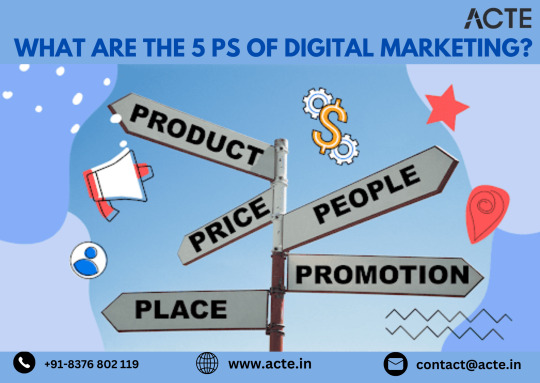
In this comprehensive guide, we'll delve into each of the 5 Ps – Product, Price, Place, Promotion, and People – and explore their application in the digital landscape.
1. Product: Understanding Your Offering
At the core of any marketing strategy is the product or service being offered. In digital marketing, comprehending your product goes beyond its features and specifications. It involves identifying its unique value proposition and how it addresses the needs and pain points of your target audience. Whether it's physical goods, digital services, or subscription-based offerings, a profound understanding of your product is essential for crafting compelling marketing messages and driving customer engagement.
2. Price: Determining the Right Value Proposition
Setting the appropriate price for your product or service is a delicate balance. In the digital era, consumers have access to a plethora of information and choices, making pricing decisions more critical than ever. Competitive pricing, value-based pricing, and dynamic pricing are just a few strategies digital marketers can utilize to capture market share and optimize profitability. By analyzing market trends, competitor pricing strategies, and customer preferences, marketers can identify the optimal price point that aligns with their business objectives and resonates with their target audience.
3. Place: Leveraging Digital Channels for Distribution
Gone are the days when "place" in marketing solely referred to physical locations. In today's digital landscape, "place" encompasses the multitude of online channels and platforms used for product distribution and sales. From e-commerce websites and mobile apps to social media platforms and online marketplaces, digital marketers have a wealth of options at their disposal. The key is to select the channels that effectively reach and engage your target audience. By leveraging digital channels strategically, marketers can expand their reach, enhance brand visibility, and drive sales in the fiercely competitive online marketplace.
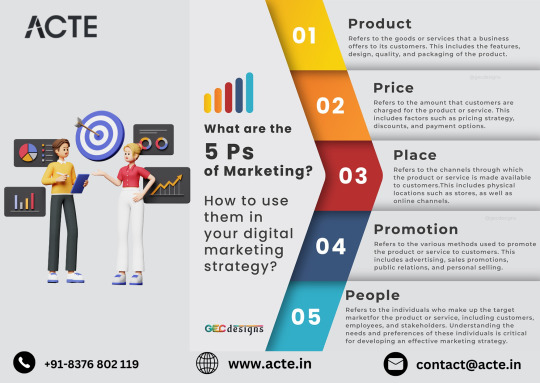
4. Promotion: Crafting Compelling Marketing Messages
Promotion is the driving force behind awareness, interest, and conversions. In digital marketing, the promotional landscape is vast and diverse, encompassing content marketing, social media marketing, email marketing, SEO, PPC advertising, influencer marketing, and more. The key is to develop cohesive and integrated promotional campaigns that resonate with your target audience across multiple touchpoints. By harnessing the power of storytelling, personalization, and data-driven insights, digital marketers can create compelling marketing messages that cut through the clutter and drive meaningful engagement with their brand.
5. People: Understanding Your Audience
At the heart of every successful marketing campaign lies a deep understanding of the target audience. In digital marketing, this entails creating detailed buyer personas that capture the demographics, psychographics, and online behavior of your ideal customers. By understanding their needs, preferences, pain points, and aspirations, marketers can tailor their messaging and offers to effectively address specific customer segments. Moreover, by leveraging data analytics and marketing automation tools, marketers can deliver personalized experiences that resonate with individual customers, fostering loyalty and repeat business.
In summary, the 5 Ps framework provides a holistic and structured approach to digital marketing strategy. By comprehending the interplay between Product, Price, Place, Promotion, and People, marketers can develop and execute effective marketing campaigns that drive results and achieve business objectives. In the dynamic and fast-paced world of digital marketing, mastering the 5 Ps is essential for staying competitive and driving growth in today's digital landscape.
#tech#training#digital marketing#digital marketing company#digital marketing course#email marketing#online marketing#search engine optimization#seo#seo services
3 notes
·
View notes
Text
Beginner's Guide to Digital Marketing and Its Endless Benefits:
The wide range of techniques and methods used to advertise goods and services through online platforms and technologies is referred to as digital marketing. It includes a range of platforms, including social media, email marketing, content marketing, and more. In essence, digital marketing uses the power of the internet to connect and engage with a larger audience in a more focused and economical way than traditional marketing techniques.

Businesses have recognised the critical importance of building a strong online presence in the current digital era. Through digital marketing, businesses may interact with and affect their target clients' purchasing decisions. Marketers may optimise their advertisements and get insightful knowledge into customer behaviour by utilising data analytics and tracking solutions. This enables real-time adaption and improvement of their advertising efforts. Additionally, digital marketing encourages a two-way contact link with clients, enabling individualised services and excellent client relations.
Benefits of Digital Marketing
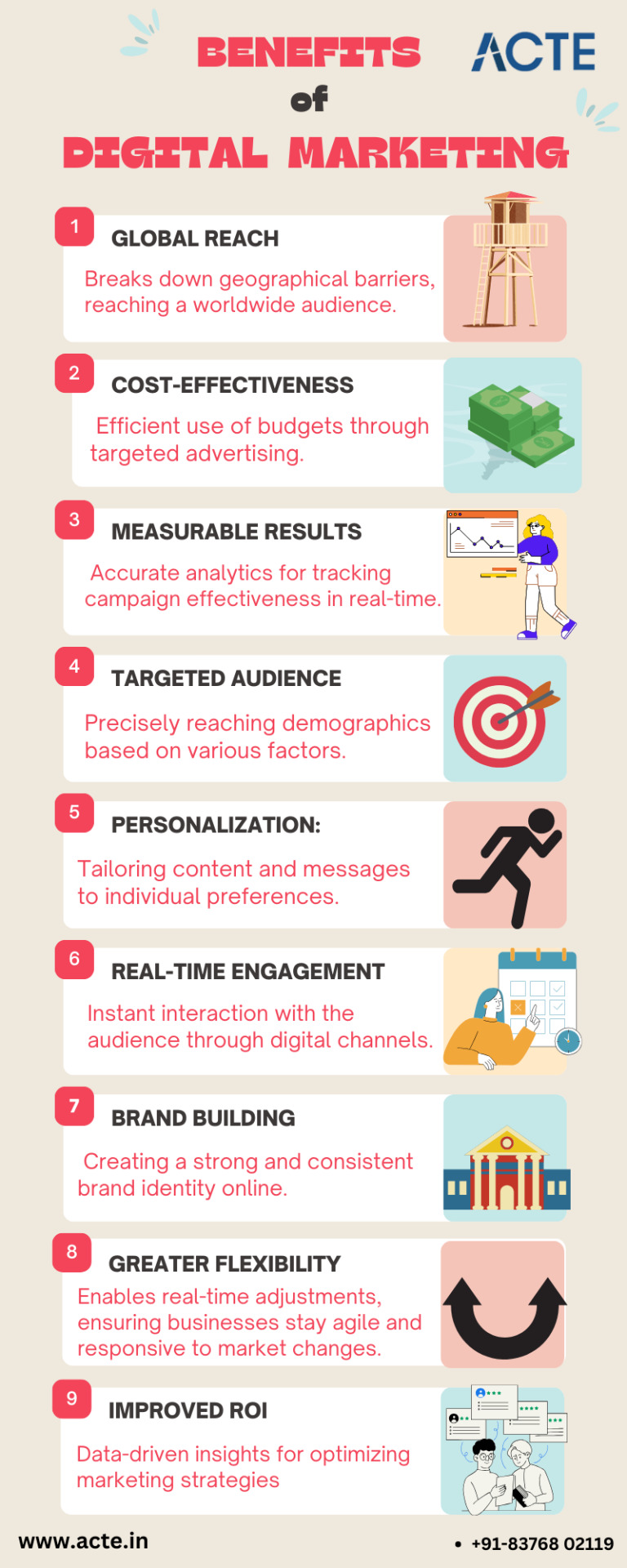
Global Coverage
Establishes connections with individuals everywhere. Reaches out beyond local boundaries by using the internet. Talks to prospective clients everywhere. Opens doors to a large audience and new markets.
Cost-Effectiveness
Costs less than traditional advertisements. No waste; chooses who to display advertising to. Spends money wisely to achieve greater results. Improves advertisements by examining how they function.
Measurable Outcomes
Examines the effectiveness of advertisements. Finds out immediately if things are going well. Observes several things, including sales and website traffic. Learns from the data and keeps getting better.
Targeted Population
Speaks specifically to particular demographic groups. Finds the appropriate person using specialist tools. Provides the correct people with the right information.
Spends no time or money on the wrong people.
Personalisation
Speaks to you in a manner that suits you. Stimulates interest and behaviour. Uses your personal data to provide you with a unique experience. Makes you feel valued and acknowledged.
Real-Time Interaction
Quickly engages you in online chat. Conversations across chat, email, and social media. Immediately assist you with your needs. Shows that it is willing to assist and that it is attentive.
Numerous Channels
Choose from a variety of online chat options. Uses email, search engines, social media, and other channels. Chooses the best options for the appropriate people. Reaches out in several ways to have a bigger effect.
Brand development
Shows the brand's personality. Makes the brand well-known and powerful. Increases consumer trust. Makes an impression and gains trust.
Implementation Immediately
Ad starts quicker than previously.
Swiftly adapts to trends and changes.
Acts when it is most effective for improved outcomes.
Maintains an edge in the digital sphere.
Simple AB testing
Tries several things to determine which is best.
Discovers what functions properly and what does not.
Uses what has been learned to improve things.
Continues to test and refine for greater success.
Enhanced relationships with customers
Speaks with consumers incessantly.
Listens and offers solutions.
Increases brand favourability and client trust.
Develops a following of devoted clients.
More Versatility
Swiftly modifies advertisements according to what's happening.
Maintains a state of readiness to adapt to people's preferences.
Uses flexibility to stay ahead of rivals.
Quick to adapt for better outcomes.
Increased ROI
Calculates the revenue that advertisements generate. Better use of resources through data insights. Increases the return on investment. Continues to develop for greater results .
Equal Opportunity Enables it to be equitable for all sorts of enterprises. Smaller ones can succeed as well. Shows up despite having a small budget. Develops a competitive market where everyone can succeed.
According to what I've seen, there are many thorough training packages for digital marketing available to assist people in developing the abilities necessary to succeed in this fiercely competitive sector. A course that offers certification and work placement prospects is a noteworthy suggestion for improving your skills. There are knowledgeable teachers ready to improve your educational experience. Both online and offline, top-notch digital marketing services are available, providing an important experience.
10 notes
·
View notes
Text
What is Digital Marketing ?
Digital marketing refers to the use of digital channels, platforms, and technologies to promote products, services, or brands to target consumers. It encompasses a wide range of online tactics and strategies aimed at reaching and engaging with potential customers. Digital marketing leverages various digital mediums such as search engines, social media, email, websites, mobile apps, and other online platforms to connect with audiences.
Key components of digital marketing include:
Search Engine Optimization (SEO): Optimizing website content to improve its visibility in search engine results pages (SERPs) and increase organic (non-paid) traffic.
Content Marketing: Creating and distributing valuable, relevant content to attract and engage target audiences. This can include blog posts, articles, videos, infographics, and more.
Social Media Marketing: Promoting products or services on social media platforms like Facebook, Instagram, Twitter, LinkedIn, and others to increase brand awareness, drive traffic, and generate leads.
Email Marketing: Sending targeted email campaigns to subscribers to nurture leads, build relationships, and promote products or services.
Pay-Per-Click (PPC) Advertising: Running paid advertisements on search engines (e.g., Google Ads) or social media platforms (e.g., Facebook Ads) to drive traffic to a website or landing page. Advertisers pay a fee each time their ad is clicked.
Affiliate Marketing: Partnering with other businesses or individuals (affiliates) who promote your products or services in exchange for a commission for each sale or lead generated through their referral.
Influencer Marketing: Collaborating with influencers or individuals with a large and engaged following on social media to promote products or services to their audience.
Marketing Automation: Using software and technologies to automate repetitive tasks such as email marketing, social media posting, and customer segmentation, thereby streamlining marketing processes and improving efficiency.
Digital marketing offers businesses numerous benefits, including the ability to reach a global audience, target specific demographics more precisely, track and measure campaign performance in real-time, and adjust strategies accordingly to optimize results.
2 notes
·
View notes
Text
Sustainability In Digital Marketing : Building Green Brands
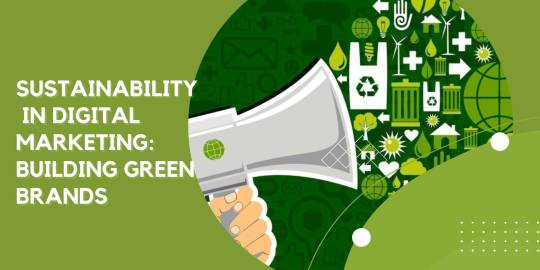
Welcome to the future of marketing, where sustainability and innovation go hand in hand. In an era when consumers are increasingly mindful of their environmental impact, businesses have a unique opportunity to not only grow their brands but also make a positive difference in the world. Today, we dive into the exciting realm of sustainable digital marketing and explore how building green brands can be both lucrative and socially responsible. Buckle up as we unravel the secrets behind creating eco-friendly campaigns that captivate audiences while leaving a lasting legacy for our planet. It’s time to revolutionize your approach to marketing – it’s time to build green brands!
Introduction To Sustainability In Digital Marketing And Its Importance
In the digital age, where consumers are increasingly concerned about the environmental impact of their actions, sustainability has become a critical consideration for businesses across industries. This includes the realm of digital marketing, where companies are leveraging innovative strategies to promote their products and services while minimizing their ecological footprint. In this article, we’ll explore the concept of sustainability in digital marketing, its importance, and why businesses need to prioritize it in today’s evolving landscape.
What Is Sustainability In Digital Marketing?
Sustainability in digital marketing refers to the integration of environmentally responsible practices into online marketing strategies and operations. This encompasses various aspects, including reducing energy consumption, minimizing waste, and promoting eco-friendly products and services. Sustainable digital marketing involves aligning marketing efforts with broader sustainability goals, such as reducing carbon emissions, conserving resources, and promoting social responsibility.
The Importance Of Sustainability In Digital Marketing
Environmental Impact Reduction: Digital marketing activities, such as website hosting, email marketing, and social media advertising, consume significant energy and resources. By adopting sustainable practices, businesses can minimize their environmental impact and contribute to mitigating climate change. This includes using renewable energy sources, optimizing server efficiency, and reducing electronic waste.
Consumer Preference and Trust: Today’s consumers are increasingly drawn to brands that demonstrate a commitment to sustainability. By incorporating environmental messaging and eco-friendly initiatives into their digital marketing campaigns, businesses can build trust and loyalty with environmentally conscious consumers. Studies show that sustainability is a key factor influencing purchasing decisions, with many consumers willing to pay a premium for sustainable products and services.
Brand Differentiation and Competitive Advantage: In a crowded marketplace, sustainability can serve as a powerful differentiator for brands. By highlighting their sustainability efforts through digital marketing channels, businesses can stand out from competitors and attract environmentally conscious consumers. A strong focus on sustainability can help companies carve out a unique position in the market and gain a competitive advantage.
Cost Savings and Efficiency: Adopting sustainable practices in digital marketing can also lead to cost savings and increased efficiency. By optimizing energy usage, streamlining operations, and reducing waste, businesses can lower their overhead costs and improve their bottom line. Sustainable digital marketing strategies, such as email marketing and content optimization, often yield higher returns on investment while minimizing environmental impact.
Long-Term Viability and Reputation Management: Sustainable digital marketing is not just about short-term gains; it’s about building a reputation for environmental stewardship and long-term viability. By demonstrating a commitment to sustainability, businesses can enhance their brand image, attract top talent, and strengthen relationships with stakeholders. A positive reputation for sustainability can also mitigate reputational risks and enhance brand resilience in the face of environmental challenges.

Understanding The Concept Of Green Brands And Their Impact On The Environment
In an era marked by growing environmental concerns and increased consumer awareness, the concept of green brands has gained significant traction. But what exactly are green brands, and how do they impact the environment? In this article, we’ll explore the essence of green brands, their significance, and the crucial role they play in fostering sustainability.
What Are Green Brands?
Green brands, also known as eco-friendly or sustainable brands, are companies that prioritize environmental sustainability in their products, services, and overall business operations. These brands go beyond mere profit-making goals; they actively strive to minimize their ecological footprint and promote responsible consumption practices. From sourcing environmentally friendly materials to implementing energy-efficient production processes, green brands are committed to making a positive impact on the planet.
The Impact Of Green Brands On The Environment
Reduction of Carbon Footprint: Green brands prioritize energy efficiency and the use of renewable resources, thereby reducing their carbon emissions. By embracing sustainable practices such as utilizing renewable energy sources and optimizing transportation logistics, these brands contribute to mitigating climate change and reducing overall environmental degradation.
Conservation of Natural Resources: Green brands are mindful of the finite nature of natural resources and work towards their conservation. They adopt strategies such as responsible sourcing of raw materials, minimizing water usage, and implementing recycling and waste reduction measures. By conserving natural resources, green brands help preserve biodiversity and ecosystems for future generations.
Promotion of Circular Economy: Green brands embrace the principles of the circular economy, which emphasizes minimizing waste and maximizing resource efficiency. Through initiatives such as product refurbishment, remanufacturing, and recycling programs, these brands extend the lifespan of products and materials, reducing the need for virgin resources and minimizing landfill waste.
Influence on Consumer Behavior: Green brands play a crucial role in shaping consumer behavior towards more sustainable choices. By transparently communicating their environmental commitments and offering eco-friendly alternatives, these brands empower consumers to make informed decisions that align with their values. As consumers increasingly prioritize sustainability, the demand for green products and services continues to grow, driving positive change across industries.
Key Strategies Adopted By Green Brands
Sustainable Sourcing: Green brands prioritize sourcing materials from ethical and environmentally responsible suppliers. This includes using renewable or recycled materials and ensuring fair labor practices throughout the supply chain.
Energy Efficiency: Green brands invest in energy-efficient technologies and practices to minimize their carbon footprint. This may involve adopting renewable energy sources, optimizing manufacturing processes, and implementing energy-saving measures in facilities and operations.
Waste Reduction and Recycling: Green brands implement strategies to minimize waste generation and maximize recycling. This includes designing products for recyclability, implementing closed-loop systems, and engaging in partnerships for waste diversion and recycling initiatives.
Transparency and Accountability: Green brands are transparent about their environmental practices and performance, providing consumers with access to information about their sustainability efforts. They may also seek third-party certifications and engage in sustainability reporting to demonstrate accountability.
Case Studies Of Successful Green Brands And Their Digital Marketing Efforts
In the ever-evolving landscape of sustainability, green brands have emerged as pioneers, demonstrating how businesses can thrive while prioritizing environmental responsibility. Leveraging digital marketing strategies, these brands have effectively communicated their commitment to sustainability, resonating with eco-conscious consumers and driving positive change. Let’s explore some inspiring case studies of successful green brands and their innovative digital marketing efforts.
1. Patagonia: Environmental Activism Through Storytelling
Patagonia, the renowned outdoor apparel company, is widely recognized for its unwavering commitment to environmental activism. Through its digital marketing efforts, Patagonia has effectively communicated its brand ethos and environmental initiatives, resonating with consumers on a deeper level. The company’s “Worn Wear” campaign, which encourages customers to repair and reuse their clothing, has been a standout example of sustainability in action. Through compelling storytelling and user-generated content shared on social media platforms, Patagonia has fostered a community of like-minded individuals passionate about protecting the planet.
2. Tesla: Revolutionizing Transportation With Innovative Technology
Tesla, the electric vehicle (EV) pioneer, has revolutionized the automotive industry with its commitment to sustainability and innovation. Through its digital marketing channels, Tesla has effectively communicated the environmental benefits of electric vehicles, highlighting their role in reducing carbon emissions and combating climate change. The company’s sleek and informative website, coupled with engaging social media content and interactive digital experiences, has helped demystify EV technology and cultivate a loyal customer base. Tesla’s visionary approach to digital marketing has not only propelled its brand to the forefront of the EV market but also inspired widespread adoption of sustainable transportation solutions.
3. Ecover: Empowering Consumers With Eco-Friendly Cleaning Products
Ecover, a pioneer in sustainable cleaning products, has carved out a niche in the market by offering environmentally friendly alternatives to conventional household cleaners. Through its digital marketing efforts, Ecover has effectively communicated the benefits of its products, emphasizing their plant-based ingredients and biodegradable formulations. The company’s engaging social media campaigns, educational blog content, and user-generated reviews have helped build brand trust and loyalty among eco-conscious consumers. By empowering consumers to make greener choices in their everyday lives, Ecover has positioned itself as a leader in the sustainable cleaning products industry.
4. Allbirds: Redefining Footwear With Sustainable Materials
Allbirds, the eco-friendly footwear company, has gained widespread acclaim for its commitment to sustainability and innovation. Through its digital marketing initiatives, Allbirds has effectively communicated the environmental benefits of its products, highlighting the use of renewable materials such as merino wool and eucalyptus fibers. The company’s minimalist website design, engaging social media content, and influencer partnerships have helped elevate its brand presence and drive sales. Allbirds’ emphasis on transparency and authenticity has resonated with consumers, positioning the brand as a frontrunner in the sustainable fashion movement.
The Role Of Consumers In Promoting Sustainability Through Their Purchasing Power
In today’s world, consumers have become powerful agents of change, wielding significant influence over the corporate landscape through their purchasing decisions. With growing environmental concerns and a heightened awareness of sustainability issues, consumers are increasingly leveraging their buying power to support brands that align with their values. In this article, we’ll explore the pivotal role of consumers in promoting sustainability and driving positive change through their purchasing choices.
1. Demand For Sustainable Products
As consumers become more environmentally conscious, there is a rising demand for products and services that prioritize sustainability. From eco-friendly household cleaners to ethically sourced clothing, consumers are actively seeking out brands that demonstrate a commitment to environmental responsibility. By choosing to support these sustainable brands, consumers send a clear message to the market that sustainability is not just a preference but a priority.
2. Influence On Corporate Behavior
Consumer preferences have a direct impact on corporate behavior, prompting companies to adapt their practices to meet the demands of the market. As sustainability becomes a key differentiator in the competitive marketplace, companies are increasingly incorporating eco-friendly practices into their business models. Whether it’s reducing carbon emissions, implementing sustainable sourcing practices, or investing in renewable energy, corporations are responding to consumer demand for more sustainable products and services.
3. Promotion Of Transparency And Accountability
Consumers play a crucial role in promoting transparency and accountability within the corporate sector. With access to information at their fingertips, consumers are increasingly scrutinizing companies’ environmental practices and holding them accountable for their actions. Social media platforms and online review sites provide consumers with a platform to voice their concerns and share their experiences, putting pressure on companies to be more transparent about their sustainability efforts.
4. Support For Ethical Supply Chains
By choosing to support brands with ethical and transparent supply chains, consumers can help promote fair labor practices and support communities around the world. Whether it’s fair trade coffee, organic cotton clothing, or conflict-free diamonds, consumers have the power to drive positive change throughout the supply chain by voting with their wallets. Through their purchasing decisions, consumers can support companies that prioritize worker rights, environmental stewardship, and social responsibility.
5. Advocacy And Collective Action
Consumer activism plays a crucial role in driving systemic change and advocating for policies that promote sustainability. Through collective action, consumers can amplify their impact and hold governments and corporations accountable for their environmental policies and practices. Whether it’s signing petitions, participating in boycotts, or supporting grassroots movements, consumers have the power to effect change at both the individual and collective levels.
Challenges And Barriers Faced By Companies In Implementing Sustainable Digital Marketing Practices
In today’s increasingly eco-conscious world, the adoption of sustainable practices has become a priority for businesses across industries. However, despite the growing recognition of the importance of sustainability, companies often encounter various challenges and barriers when attempting to integrate sustainability into their digital marketing strategies. In this article, we’ll explore some of the key challenges faced by companies in implementing sustainable digital marketing practices and strategies to overcome them.
1. Cost Considerations
One of the primary challenges companies face in implementing sustainable digital marketing practices is the perceived higher cost associated with sustainable initiatives. Sustainable materials, renewable energy sources, and eco-friendly production processes often come with a higher price tag, making it difficult for companies, especially small and medium-sized enterprises (SMEs), to justify the investment. Additionally, the transition to sustainable practices may require significant upfront investments in infrastructure and technology, further adding to the financial burden.
Solution: Companies can overcome cost barriers by adopting a long-term perspective and recognizing the potential cost savings associated with sustainability initiatives. Investing in energy-efficient technologies, optimizing resource utilization, and minimizing waste can lead to significant cost reductions over time. Moreover, companies can explore alternative financing options, such as green loans and grants, to support their sustainability efforts.
2. Lack Of Consumer Awareness
Another challenge companies face is the lack of consumer awareness and understanding of sustainability issues. While there is growing interest in eco-friendly products and services, many consumers may not be fully aware of the environmental impact of their purchasing decisions or the sustainability initiatives implemented by companies. As a result, companies may struggle to effectively communicate their sustainability efforts and differentiate themselves in the market.
Solution: To address this challenge, companies can focus on educating consumers about sustainability issues and the environmental benefits of their products and services. Utilizing digital marketing channels such as social media, blogs, and email newsletters, companies can share compelling stories, informative content, and transparent reporting on their sustainability initiatives. By engaging consumers and raising awareness, companies can build trust and loyalty among environmentally conscious consumers.
3. Complexity Of Supply Chains
The complexity of global supply chains presents another significant challenge for companies seeking to implement sustainable digital marketing practices. Many companies rely on extensive networks of suppliers and partners, making it challenging to trace the origin of raw materials, ensure ethical labor practices, and monitor environmental impact throughout the supply chain. Moreover, implementing sustainability initiatives across diverse supply chains requires collaboration and coordination among multiple stakeholders, further complicating the process.
Solution: Companies can address supply chain challenges by adopting a holistic approach to sustainability and collaborating closely with suppliers and partners. Implementing robust supply chain management systems, conducting audits and assessments, and establishing clear sustainability guidelines can help ensure transparency and accountability throughout the supply chain. Additionally, companies can prioritize partnerships with suppliers that share their commitment to sustainability and work together to drive positive change.
4. Regulatory And Policy Constraints
Regulatory and policy constraints pose additional challenges for companies seeking to implement sustainable digital marketing practices. While there is growing recognition of the importance of sustainability among policymakers, regulatory frameworks and standards vary widely across regions and industries, creating compliance challenges for companies operating in multiple markets. Moreover, evolving regulations and emerging sustainability trends require companies to remain agile and adaptable in their approach.
Solution: Companies can navigate regulatory and policy constraints by staying informed about relevant regulations and standards and proactively addressing compliance requirements. Engaging with industry associations, participating in sustainability initiatives, and advocating for supportive policies can also help shape regulatory environments conducive to sustainable business practices. By staying ahead of regulatory developments and integrating sustainability into their business strategies, companies can mitigate compliance risks and seize opportunities for innovation.
Tips And Strategies For Companies To Build A Strong Green Brand Through Digital Marketing
In an era where sustainability is at the forefront of consumer consciousness, building a strong green brand has become essential for businesses aiming to thrive in the modern marketplace. Leveraging digital marketing strategies effectively can not only showcase a company’s commitment to environmental responsibility but also resonate with eco-conscious consumers. In this article, we’ll explore actionable tips and strategies for companies to build a robust green brand through digital marketing.
1. Authenticity Is Key
The foundation of a strong green brand lies in authenticity. It’s crucial for companies to genuinely embrace sustainability as a core value rather than merely jumping on the green bandwagon for marketing purposes. Authenticity builds trust and credibility with consumers, fostering long-term relationships and loyalty. Ensure that sustainability initiatives are integrated into the company’s mission, values, and operations, and communicate them transparently through digital marketing channels.
2. Tell Compelling Stories
Storytelling is a powerful tool for engaging consumers and communicating the brand’s sustainability journey. Share stories that highlight the company’s environmental initiatives, successes, challenges, and impact. Whether it’s showcasing sustainable sourcing practices, eco-friendly product innovations, or community initiatives, storytelling humanizes the brand and creates emotional connections with consumers. Use digital platforms such as social media, blogs, and videos to share these stories in an authentic and compelling manner.
3. Educate And Empower Consumers
Empower consumers to make informed choices by educating them about sustainability and the environmental impact of their purchasing decisions. Use digital marketing channels to provide valuable information, tips, and resources on topics such as sustainable living, eco-friendly products, and environmental conservation. Engage with consumers through interactive content, webinars, and Q&A sessions to address their questions and concerns. By positioning the brand as a trusted source of information, companies can empower consumers to make greener choices.
4. Transparency And Accountability
Transparency is essential for building trust and credibility with consumers. Be transparent about the company’s sustainability efforts, goals, and progress. Share information about supply chain practices, carbon footprint, energy usage, and waste management initiatives. Utilize digital platforms to provide real-time updates, sustainability reports, and certifications that demonstrate the company’s commitment to transparency and accountability. Encourage feedback from consumers and stakeholders, and be responsive to their concerns.
5. Engage With Sustainability Influencers
Collaborate with influencers and advocates in the sustainability space to amplify the brand’s message and reach a wider audience of eco-conscious consumers. Identify influencers who align with the brand’s values and have a genuine passion for sustainability. Partner with them to create content, host events, or launch sustainability-focused campaigns. Leverage their credibility and influence to increase brand visibility, credibility, and engagement within the sustainability community.
6. Optimize Digital Channels For Sustainability
Optimize digital marketing channels to align with sustainability principles and reduce environmental impact. Implement energy-efficient technologies, eco-friendly web hosting, and sustainable design practices for websites and mobile apps. Minimize paper usage by transitioning to digital marketing materials, e-brochures, and e-newsletters. Encourage digital transactions and provide digital alternatives to physical products whenever possible. By embracing sustainable practices in digital marketing operations, companies can further reinforce their commitment to environmental responsibility.
Conclusion:
In conclusion, sustainability in digital marketing presents a tremendous opportunity for brands to build meaningful connections with environmentally conscious consumers and differentiate themselves in a crowded marketplace. By embracing authenticity, educating and empowering consumers, harnessing the power of social media, embracing sustainable packaging, and collaborating with like-minded partners, brands can position themselves as leaders in the green movement and make a lasting impact on the planet. Ultimately, by integrating sustainability into their digital marketing strategies, brands can not only drive business growth but also contribute to a more sustainable and equitable future for all.
#website landing page design#magento development#asp.net web and application development#best web development company in united states#logo design company#web development company#digital marketing company in usa#web design#web development
2 notes
·
View notes
Text
Project Summary: We propose to offer a $100 cash reward to eligible participants as an incentive to encourage engagement and participation in our program. This reward aims to attract potential customers, promote brand loyalty, and incentivize desired behaviors.
Objectives:
Increase engagement: The cash reward will motivate individuals to participate actively in our program, leading to higher engagement levels.
Boost customer acquisition: Offering a cash incentive will attract new customers who are enticed by the opportunity to receive immediate monetary benefits.
Foster brand loyalty: By providing a tangible reward, we aim to cultivate a positive association with our brand, leading to increased customer loyalty and retention.
Drive desired behaviors: The $100 cash offer will incentivize customers to take specific actions, such as making a purchase, referring friends, or completing surveys, aligning with our strategic objectives.
Offer Details:
Eligibility: All participants who meet the specified criteria outlined in the terms and conditions are eligible to receive the $100 cash reward.
Redemption Process: Participants can claim their cash reward through a secure online portal by following the instructions provided.
Payment Method: Cash rewards will be disbursed via electronic transfer to the participant's designated bank account or through alternative methods, as deemed appropriate.
Duration: The $100 cash offer will be valid for a specified period, ensuring a sense of urgency and encouraging prompt action.
Terms and Conditions: Detailed terms and conditions will be provided to participants, outlining the eligibility criteria, redemption process, and any additional requirements.
Promotion Strategy:
Multi-channel Marketing: We will promote the $100 cash offer through various channels, including social media, email marketing, website banners, and digital advertising, to maximize visibility and reach.
Targeted Campaigns: Tailored marketing campaigns will be developed to target specific demographics or customer segments most likely to respond positively to the cash incentive.
Partner Collaborations: Collaborating with strategic partners or influencers can amplify the promotion's reach and credibility, enhancing its effectiveness.
Creative Messaging: Compelling messaging emphasizing the immediate benefits of the $100 cash offer will be crafted to capture the audience's attention and drive engagement.
Measurement and Evaluation:
Participation Rate: We will track the number of participants who claim the $100 cash reward to measure the promotion's effectiveness in driving engagement.
Customer Acquisition: Monitoring new customer acquisitions resulting from the cash offer will provide insights into its impact on expanding our customer base.
Return on Investment (ROI): Calculating the ROI by comparing the cost of the cash rewards to the generated revenue and other key performance indicators will determine the promotion's overall success.
Conclusion: In conclusion, the $100 cash offer presents a compelling incentive to attract and retain customers while driving desired behaviors that align with our business objectives. Through strategic promotion and meticulous measurement, we aim to maximize the effectiveness of this incentive program and achieve sustainable growth for our business.

#feminism#misandry#womens rights#liberal feminism#sexism#fuck the patriarchy#intersectionalfeminist#david tennant#david tenannt#staged#weeping angels#catherine tate#david fucking tennant#good omens cast#mental health#therapy#burnout#coping#mental health support#mental wellness#boundaries
2 notes
·
View notes
Text
Digital marketing info!
Certainly! Digital marketing encompasses a wide range of strategies and tactics aimed at promoting products or services using digital channels. Here's a beginner's guide to digital marketing:
Understanding Digital Marketing: Digital marketing refers to any marketing effort that uses electronic devices and the internet. It includes various channels such as search engines, social media, email, websites, and mobile apps.
Key Components of Digital Marketing:
Search Engine Optimization (SEO): The process of optimizing your website to rank higher in search engine results pages (SERPs) organically.
Search Engine Marketing (SEM): Paid advertising that appears on search engine results pages (e.g., Google Ads).
Social Media Marketing (SMM): Using social media platforms (e.g., Facebook, Instagram, Twitter) to connect with your audience and promote your brand.
Content Marketing: Creating and distributing valuable, relevant, and consistent content to attract and retain a clearly defined audience.
Email Marketing: Sending commercial messages to a group of people using email.
Affiliate Marketing: Partnering with other businesses or individuals to promote your products or services in exchange for a commission.
Influencer Marketing: Collaborating with influencers to promote your brand or products to their followers.
Setting Goals: Define your objectives. Whether it's increasing brand awareness, driving website traffic, generating leads, or boosting sales, clear goals will guide your digital marketing efforts.
Understanding Your Target Audience: Identify your target audience's demographics, interests, behaviors, and pain points. This information will help you tailor your digital marketing campaigns to resonate with your audience.
Creating a Digital Marketing Strategy: Develop a plan that outlines your tactics, channels, budget, and timeline. Your strategy should align with your goals and target audience.
Measuring and Analyzing Results: Use analytics tools to track the performance of your digital marketing campaigns. Metrics such as website traffic, conversion rates, click-through rates, and social media engagement can provide insights into what's working and what needs improvement.
Staying Updated: Digital marketing is constantly evolving, with new trends, tools, and algorithms emerging regularly. Stay informed about industry updates, best practices, and emerging technologies to stay ahead of the competition.
Learning Resources: There are numerous online resources, courses, and communities dedicated to digital marketing. Consider investing time in learning from reputable sources such as Google Digital Garage, HubSpot Academy, or industry blogs and podcasts.
Remember, successful digital marketing requires experimentation, adaptation, and continuous learning. Start with the basics, and as you gain experience and insights, refine your strategies to achieve your business objectives effectively.
2 notes
·
View notes
Text
Become a Digital Marketing Pro: Learn the Basics NOW!
What is Digital Marketing?
Digital Marketing refers to the marketing of products and services of a company or business through digital channels such as search engines, websites, email, social media, mobile apps, etc. It involves the use of electronic devices and the internet. Digital marketing is often referred to as online marketing, internet marketing or web marketing.
Digital marketing mainly comprises Search Engine Optimization (SEO), Social Media Optimization (SMO), and Search Engine Marketing (SEM). We can say that it can be divided into three parts SEO, SMO, and SEM. However, Email Marketing and Affiliate Marketing have also become important components of digital marketing over the past few years. So, in digital marketing, we mainly deal with the following components:
SEO
SMO
SEM
Email Marketing
Affiliate Marketing
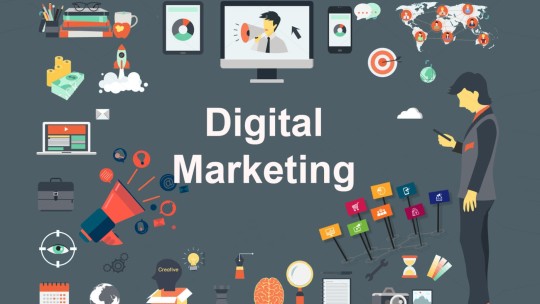
Why choose Digital Marketing?
Non-Digital Marketing, which is the traditional means of marketing, includes the usage of physical means of marketing. These are generally in the form of physical prints such as posters, flyers, newspaper advertisements, and billboards. Even at the first glance, it is quite apparent why almost every business is choosing to get into Digital Marketing.
The primary and the most fundamental reasoning for this is the amount of reach that is possible with it. There are smart devices everywhere, from televisions, laptops, computers, and tablets to smartphones. Even cars have smart systems enabled in them where you can access the Internet. All of these facilities present a blank canvas for advertising your brand.
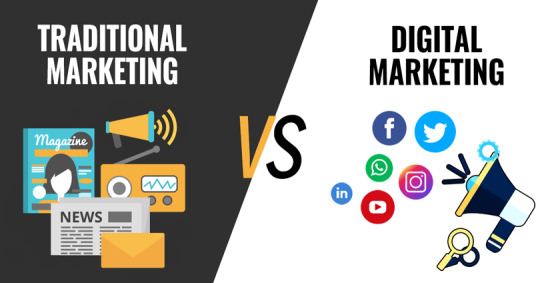
How does Digital Marketing work?
There are two ways in which Digital Marketing is implemented by brands and businesses:
B2C (Business to Customer)
B2B (Business to Business)
B2C (Business to Customer):
When a brand or a company has to sell a product or service to individual customers. In fact, 95 percent of the time, the ads and marketing that you see online are examples of B2C campaigns, e.g., an ad for a candy bar, a promotional video for a safety razor, or a movie trailer. All of these marketing efforts are targeting individual consumers and not organizations.
B2B (Business to Business):
B2B is conducted for very specific products. You wouldn’t generally see B2B products being advertised on platforms with traffic from the everyday crowd. These marketing campaigns are low profile, professional, and in most cases, marketed directly (or pitched) to the client. This client can be a small business or a corporate giant. We can take heavy-duty cooking machinery used in big fast-food restaurants as an example. What would be the point of running a TV ad for an industry-level chimney? None. This sort of marketing is done through B2B-specialized salesmen who use custom-made marketing material, PowerPoint presentations, and word of mouth to pitch their product.
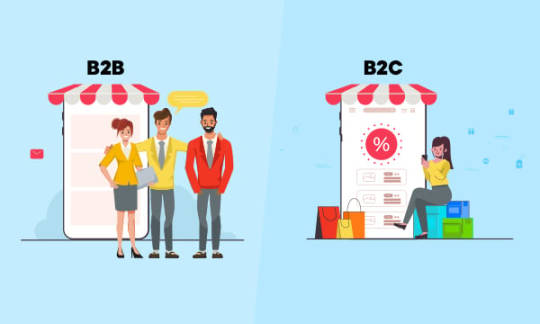
Not surprisingly, billions of marketing dollars spent on traditional channels is already starting to shift to digital marketing campaigns and this will continue to increase as the Web matures.
#digital marketing#digital marketing from basics#Introduction to digital marketing#how to learn digital marketing#what is digital marketing#online marketing#affiliate marketing#Basics of digital marketing#Why choose digital marketing#How does digital marketing work#learn digital marketing#Email marketing#search engine optimisation#seo#seo marketing
13 notes
·
View notes
Text
Digital Marketing Strategy
Digital Marketing:
Digital marketing is a comprehensive approach to promote products, services or brands using digital channels and technology Key elements of digital marketing include search engine optimization (SEO), content marketing, social media marketing, email marketing, pay-per-click advertising, mobile marketing, affiliate marketing and more. In an increasingly digital world, businesses take advantage of digital marketing to effectively reach and engage their target customers. This powerful tool allows for precise audience targeting, data-driven decision making and real-time interaction, making it an essential component of modern marketing strategies. In today's digital age, digital marketing is an important tool for businesses to stay competitive and effectively reach their audience online.
Digital Marketing Key element:
1. Search Engine Optimization (SEO)
2. Content Marketing
3. Social Media Marketing
4. Email Marketing
5. Pay-Per-Click Advertising (PPC)
6. Mobile Marketing
7. Affiliate Marketing
Search Engine Optimization ( SEO) :
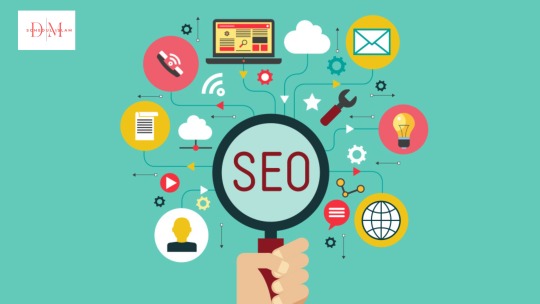
Search Engine Optimization, commonly known as SEO, is a fundamental component of digital marketing. It refers to the practice of optimizing websites and online content to improve their visibility in search engine results. The primary objective of SEO is to increase organic (non-paid) traffic to a website by ensuring that it ranks higher in search engine results pages (SERPs).
Key elements of SEO include:
Keyword Research: Identifying relevant keywords and phrases that potential visitors might use to find your content. This forms the foundation of your SEO strategy.
On-Page Optimization: Optimizing various on-page elements, including meta titles, meta descriptions, headers, and content, to align with chosen keywords and improve search engine rankings.
Off-Page Optimization: Building high-quality backlinks from reputable websites to enhance a site's authority and credibility in the eyes of search engines.
Technical SEO: Ensuring that a website is technically sound and adheres to search engine guidelines, including factors like site speed, mobile-friendliness, and crawlability.
Content Creation: Developing high-quality, informative, and engaging content that not only caters to the needs of the target audience but also incorporates relevant keywords.
User Experience (UX): Improving the overall user experience on a website, which can indirectly impact SEO by reducing bounce rates and increasing time spent on the site.
Local SEO: Optimizing online presence for local businesses, making them more visible in local searches and on platforms like Google Maps.
Monitoring and Analysis: Continuously tracking website performance through analytics tools, evaluating key metrics, and making data-driven adjustments to improve SEO strategies.
Content Marketing:
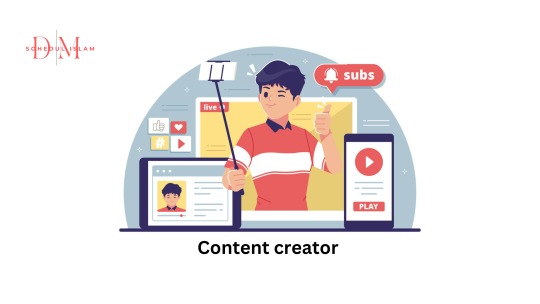
Content marketing is a pivotal element of digital marketing and online communication. It involves the development of various types of content, such as articles, blog posts, videos, infographics, podcasts, and more, to engage, inform, entertain, and inspire a target audience. The primary objective of content creation is to provide value, solve problems, and establish connections with the intended audience, ultimately driving desired actions, whether it's purchasing a product, sharing information, or subscribing to a newsletter.
Key aspects of content Marketing include:
Audience-Centric Approach: Effective content creation starts with a deep understanding of the target audience's preferences, needs, and pain points. Content should be tailored to resonate with the audience.
Quality and Relevance: High-quality content is essential. It should be accurate, well-researched, and free from errors. Relevance to the audience's interests is crucial for engagement.
Keyword Integration: For content's discoverability, it often includes strategically chosen keywords to improve its visibility in search engine results (part of SEO).
Storytelling: Storytelling can make content more relatable and memorable, helping to establish an emotional connection with the audience.
Multimedia Elements: Incorporating visuals, videos, infographics, and other multimedia elements can enhance the engagement and shareability of content.
Consistency: Consistent content creation builds trust and reliability with the audience, keeping them engaged over time.
Distribution and Promotion: Creating content is only half the battle. Promoting and distributing it through various channels, such as social media, email, and SEO, is vital to reach the intended audience.
Measure and Optimize: Regularly evaluating content performance with analytics tools allows for data-driven decisions and continuous improvement.
Social Media Marketing:
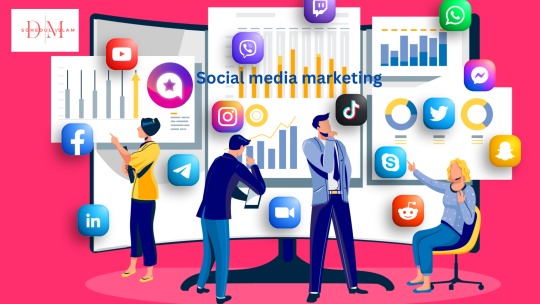
Social Media Marketing (SMM) is a powerful component of digital marketing that utilizes social media platforms to connect with an audience, build brand awareness, and achieve marketing objectives. It involves creating and sharing content on social media networks to engage and interact with users, with the ultimate goal of driving traffic, generating leads, and increasing sales.
Key aspects of social media marketing include:
Platform Selection: Choosing the right social media platforms that align with your target audience and business objectives. Popular platforms include Facebook, Instagram, Twitter, LinkedIn, Pinterest, and TikTok.
Content Creation: Developing engaging and shareable content in various formats, including text, images, videos, infographics, and stories.
Community Building: Building and nurturing a community of followers and engaging with them through comments, likes, shares, and direct messages.
Social Advertising: Running paid advertising campaigns on social media platforms to reach a broader or specific audience, often using tools like Facebook Ads and Instagram Ads.
Social Listening: Monitoring conversations and mentions related to your brand or industry to gain insights, address customer concerns, and participate in relevant discussions.
Influencer Marketing: Collaborating with social media influencers who have a strong following in your niche to promote your products or services.
Analytics and Reporting: Measuring the performance of social media campaigns, tracking key metrics, and using data to make informed decisions and refine strategies.
Email Marketing:
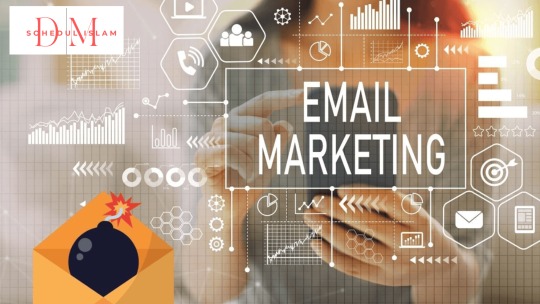
Email marketing is a digital marketing strategy that involves sending emails to a group of recipients with the goal of promoting products or services, building relationships with customers, and achieving various marketing objectives. This approach is widely used by businesses, organizations, and individuals to reach a targeted audience and deliver relevant content directly to their email inboxes. Here are some key aspects of email marketing:
Key aspects of Email marketing include:
Audience Segmentation: Email marketing allows you to segment your email list based on various criteria, such as demographics, behavior, and preferences. This enables you to send highly personalized and relevant content to different groups of recipients.
Campaign Creation: Email campaigns can take various forms, including newsletters, promotional offers, product updates, event invitations, and more. Creating compelling and visually appealing email content is crucial to engage recipients.
Automation: Many email marketing platforms offer automation features, allowing you to send pre-scheduled emails or triggered messages based on specific user actions, such as subscribing, making a purchase, or abandoning a cart.
Tracking and Analytics: Email marketing tools provide insights into email open rates, click-through rates, conversion rates, and other valuable data. This data helps you measure the effectiveness of your campaigns and make data-driven improvements.
Compliance with Regulations: Adhering to email marketing regulations and obtaining recipients' consent is essential. This includes compliance with laws like the CAN-SPAM Act and the General Data Protection Regulation (GDPR).
A/B Testing: Email marketers often perform A/B testing to experiment with different email subject lines, content, and designs to identify what resonates best with their audience.
Personalization: Personalizing email content with recipients' names and tailored recommendations can significantly improve engagement and conversions.
Call to Action (CTA): Emails typically include a clear CTA, guiding recipients to take a specific action, such as making a purchase, signing up for a webinar, or downloading a resource.
Mobile Optimization: Given the prevalence of mobile email usage, ensuring that emails are mobile-responsive is crucial for reaching a wide audience effectively.
Nurturing Customer Relationships: Email marketing can be used to nurture relationships with customers, provide ongoing value, and turn one-time buyers into loyal, repeat customers.
Pay-Per-Click Advertising (PPC):
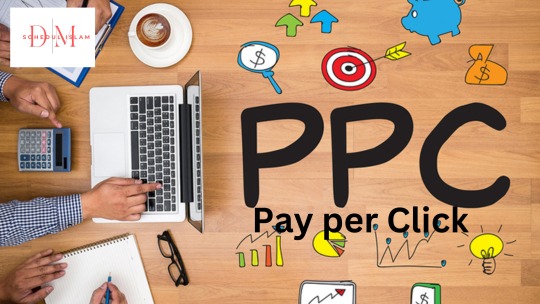
Pay-Per-Click Advertising (PPC) is a digital marketing model in which advertisers pay a fee each time one of their ads is clicked. It is a highly targeted and cost-effective way to drive traffic to websites, boost brand visibility, and generate leads or sales. PPC campaigns are commonly associated with search engines like Google and Bing, as well as various social media platforms such as Facebook, Instagram, and Twitter. Here are key aspects of PPC advertising:
Key aspects of Pay-Per-Click Advertising (PPC) include:
Keyword Targeting: Advertisers select specific keywords or phrases related to their products or services. When users search for these keywords, the advertiser's ads may appear in search engine results.
Ad Auctions: Search engines and social media platforms hold ad auctions to determine which ads are displayed when a user searches for specific keywords. Factors like bid amount and ad quality influence ad placement.
Ad Formats: PPC ads can take various formats, including text ads, display ads, shopping ads (for e-commerce), and video ads. The choice of ad format depends on the platform and advertising goals.
Budget Control: Advertisers set daily or monthly budgets to control their ad spending. Once the budget is exhausted, the ads typically stop running until the budget is replenished.
Ad Copy: Creating compelling ad copy with attention-grabbing headlines and relevant content is essential for attracting clicks and conversions.
Landing Pages: PPC ads are linked to specific landing pages on the advertiser's website. These pages are designed to provide a seamless user experience and encourage desired actions, such as making a purchase or signing up.
Conversion Tracking: PPC platforms often offer conversion tracking tools to measure the success of campaigns. Advertisers can track specific actions, such as form submissions or purchases, to evaluate the return on investment (ROI).
Ad Extensions: Advertisers can enhance their ads with extensions like site link, callout, and location extensions, providing additional information to users and improving ad performance.
Geographic Targeting: Advertisers can target specific geographic locations, ensuring that their ads are displayed to users in their target markets.
Negative Keywords: Identifying and excluding negative keywords prevents ads from showing for irrelevant searches, optimizing ad spend.
Mobile Marketing:
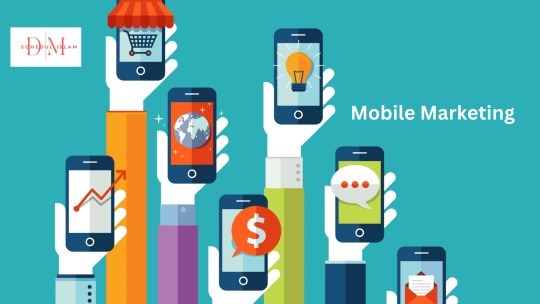
Mobile marketing is a digital marketing strategy that focuses on reaching and engaging target audiences through mobile devices such as smartphones and tablets. With the widespread use of mobile devices, this approach has become a vital component of modern marketing strategies. Mobile marketing encompasses various techniques and channels designed to connect with users on the go. Here are key aspects of mobile marketing.
Key aspects of mobile marketing include:
Mobile-Friendly Websites: Ensuring that websites are mobile-responsive and optimized for smaller screens, touch navigation, and faster loading times is crucial for a positive user experience.
SMS Marketing: Sending text messages to customers or subscribers to deliver promotional content, alerts, or reminders. SMS marketing is highly effective for time-sensitive campaigns.
Mobile Apps: Developing and promoting mobile applications to enhance user engagement, brand loyalty, and convenience. Mobile apps are a valuable platform for offering personalized experiences and services.
Location-Based Marketing: Utilizing a user's location to send geographically relevant content, such as local offers, store directions, or proximity-based notifications.
In-App Advertising: Displaying ads within mobile applications, including banner ads, interstitial ads, and rewarded video ads. In-app advertising allows businesses to reach users while they engage with their favorite apps.
Push Notifications: Sending timely and relevant notifications to app users to inform them of updates, promotions, or other valuable information. Push notifications are a direct way to re-engage with app users.
Mobile Social Media Marketing: Leveraging social media platforms like Facebook, Instagram, Twitter, and Snapchat to engage mobile users through tailored ad campaigns, posts, and stories.
Mobile Payment and Wallet Marketing: Integrating with mobile payment solutions and digital wallets to offer convenient payment options and deliver promotional offers and loyalty rewards.
QR Codes: Using QR codes in print materials or physical locations to direct users to specific mobile web pages, promotions, or additional information.
Mobile Video Marketing: Creating and sharing video content optimized for mobile viewing. Video is a highly engaging format for mobile users.
Affiliate Marketing:
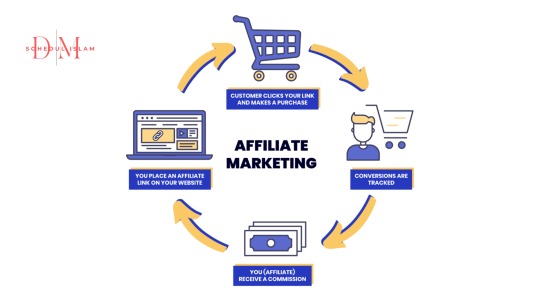
Affiliate marketing is a performance-based digital marketing strategy where businesses reward individuals or other businesses (affiliates) for driving traffic or generating sales or leads to their products or services through the affiliate's marketing efforts. It's a win-win arrangement where affiliates earn a commission for the sales or actions they influence, while businesses benefit from increased exposure and sales. Here are key aspects of affiliate marketing:
Key aspects of affiliate marketing include:
Affiliate Partners: Affiliates can be bloggers, influencers, website owners, social media marketers, or anyone with an online presence willing to promote products or services in exchange for a commission.
Affiliate Networks: Many businesses use affiliate networks or platforms (such as Amazon Associates or ShareASale) to manage their affiliate programs. These platforms provide tracking, reporting, and payment tools.
Commission Models: Affiliates can earn commissions through various models, including pay-per-sale, pay-per-click, pay-per-lead, or pay-per-action, depending on the agreement with the business.
Promotional Methods: Affiliates use a variety of marketing methods, including content marketing, email marketing, social media promotion, product reviews, and paid advertising, to drive traffic and conversions.
Tracking and Analytics: Businesses provide affiliates with unique tracking links or codes to monitor the performance of each affiliate's efforts. These links ensure proper attribution of sales or leads.
Affiliate Marketing Tools: Both businesses and affiliates can use specialized tools to optimize and manage their affiliate marketing campaigns, track performance, and assess ROI.
Compliance and Regulations: Adherence to ethical marketing practices, as well as disclosure and compliance with regulations, is essential to maintain transparency and trust among customers.
Payment Structure: Commissions can be one-time payments, recurring payments for subscription-based products or services, or tiered structures where affiliates earn higher percentages as they generate more sales or leads.
Affiliate Marketing for E-commerce: E-commerce businesses often leverage affiliate marketing to expand their reach and sales, as affiliates can showcase a wide range of products to their audience.
Relationship Building: Building strong relationships with affiliates can lead to long-term partnerships and collaboration on multiple marketing campaigns.
Conclusion:
In the digital age, digital marketing is a linchpin for businesses. It empowers precise audience targeting, real-time data insights, and diverse strategies like SEO, content marketing, and social media engagement. A dynamic and evolving landscape, digital marketing is an indispensable tool for building brand presence, driving growth, and staying competitive in the ever-connected online world.
Sure, here are three frequently asked questions about digital marketing along with short answers:
1. What is digital marketing?
Answer: Digital marketing is the practice of promoting products or services using digital channels such as websites, social media, email, search engines, and online advertising to reach and engage with a target audience.
2. What are some key digital marketing strategies?
Answer: Key digital marketing strategies include SEO (Search Engine Optimization), content marketing, social media marketing, email marketing, pay-per-click advertising, and influencer marketing, among others.
3. How can I measure the success of my digital marketing campaigns?
Answer: You can measure the success of digital marketing campaigns by tracking key performance indicators (KPIs) like website traffic, conversion rates, click-through rates, social media engagement, and return on investment (ROI). Analyzing these metrics helps you assess the effectiveness of your campaigns and make data-driven improvements.
Read more........
4 notes
·
View notes
Text
Digital Marketing
Digital Marketing :
Digital marketing refers to the strategic use of online platforms and technologies to promote products, services, or brands to a targeted audience. In today's interconnected world, digital marketing has become an essential component of any successful business strategy.
One of the key advantages of digital marketing is its unparalleled reach. Through channels such as social media, search engines, email, and websites, businesses can connect with a global audience, breaking down geographical barriers. This not only increases brand visibility but also allows for precise audience targeting, ensuring that marketing efforts reach the right people at the right time.
Furthermore, digital marketing offers measurable results and real-time analytics. Marketers can track engagement, conversion rates, website traffic, and other relevant metrics, enabling them to adjust their strategies on the fly for optimal outcomes. This data-driven approach enhances decision-making and helps allocate resources effectively.
The versatility of digital marketing is another highlight. Businesses can employ a variety of content formats – text, images, videos, interactive elements – to engage audiences across different platforms. Social media campaigns, influencer collaborations, search engine optimization (SEO), pay-per-click (PPC) advertising, and email marketing are just a few examples of the diverse tactics that fall under the digital marketing umbrella.
However, the digital landscape is constantly evolving, requiring marketers to stay up-to-date with the latest trends and algorithm changes. A successful digital marketing strategy demands creativity, adaptability, and a deep understanding of the target audience's preferences and behaviors.
In conclusion, digital marketing is a dynamic and powerful tool that offers unprecedented reach, precise targeting, real-time analytics, and a plethora of creative possibilities. When harnessed effectively, it has the potential to elevate brands and businesses to new heights in the digital age.
For More Information https://digitalmarketingbymayank.blogspot.com/2023/07/usefull-tool-for-digital-marketing.html
TOP 10 Usefull Tool For Digital Marketing:
Embracing The Latest Trends :
3 notes
·
View notes